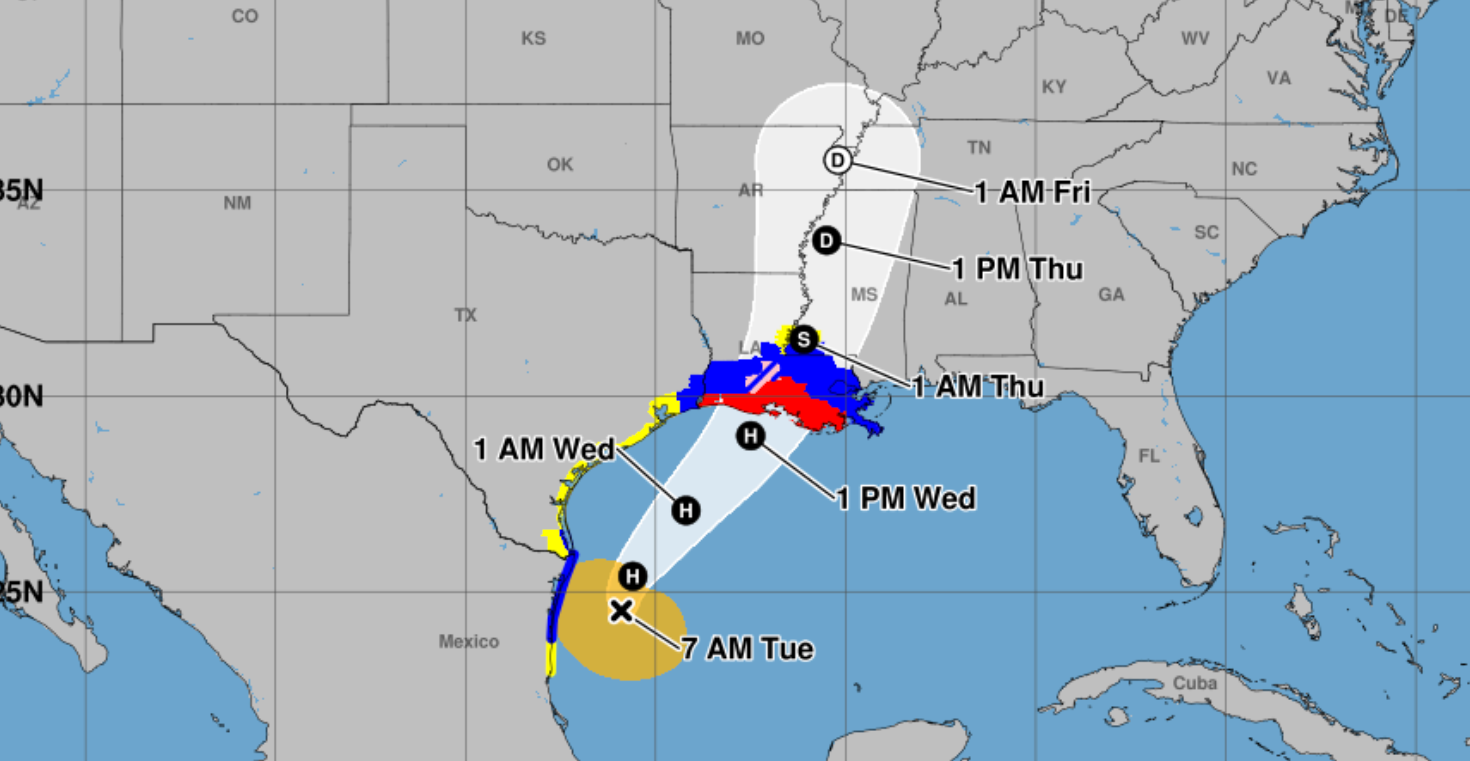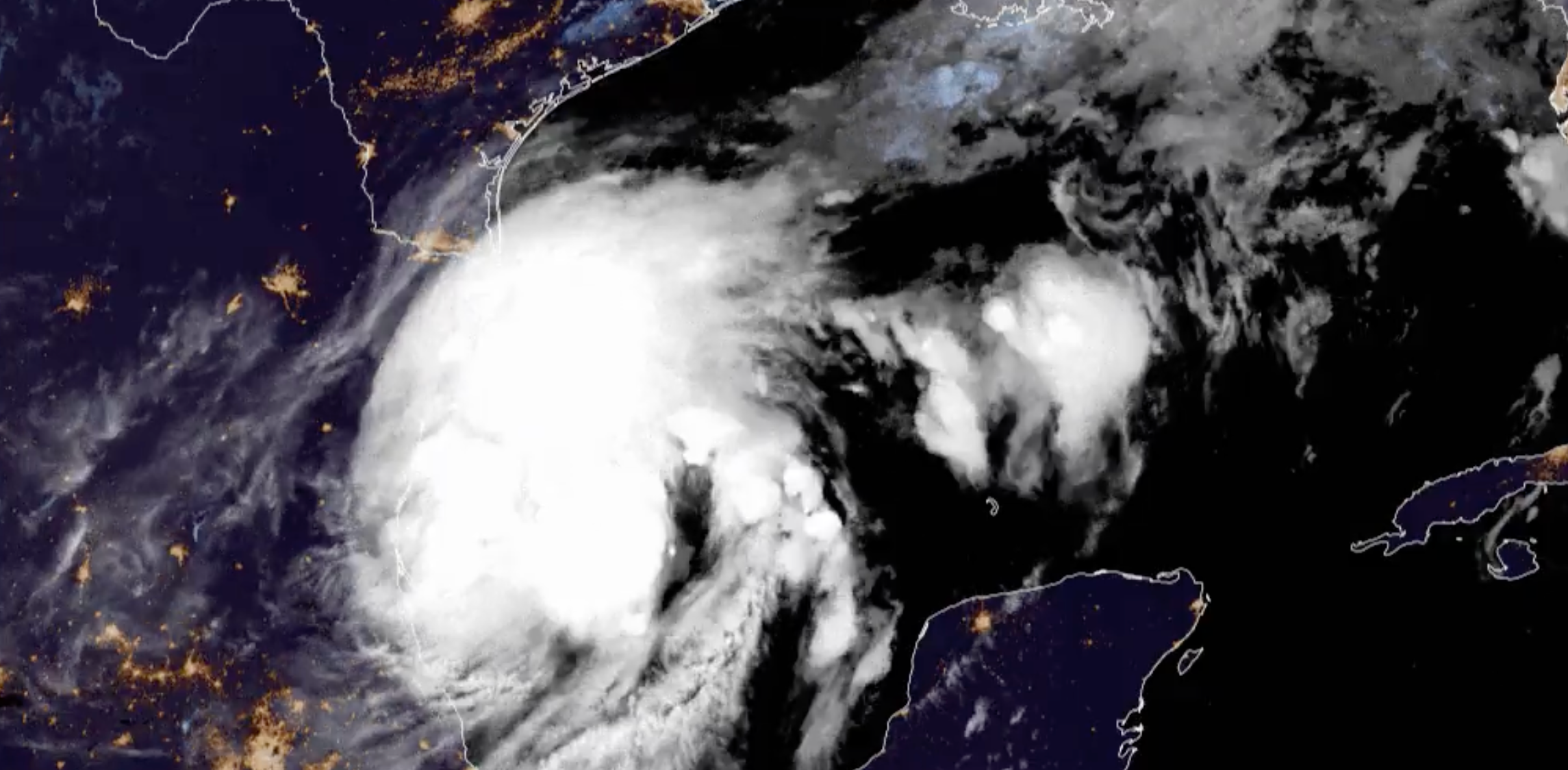This website uses cookies so that we can provide you with the best user experience possible. Cookie information is stored in your browser and performs functions such as recognising you when you return to our website and helping our team to understand which sections of the website you find most interesting and useful.
Your support helps us to tell the story
As your White House correspondent, I ask the tough questions and seek the answers that matter.
Your support enables me to be in the room, pressing for transparency and accountability. Without your contributions, we wouldn't have the resources to challenge those in power.
Your donation makes it possible for us to keep doing this important work, keeping you informed every step of the way to the November election

Andrew Feinberg
White House Correspondent
Tropical Storm Francine was moving about 125 miles southeast of the Rio Grande on Tuesday morning, and was forecast to become a hurricane later in the day.
Communities in Texas and Louisiana are bracing for the brunt of the impact, and the storm is expected to bring strong winds and rains to the area.
Francine has maximum sustained winds of 65 miles per hour, and is projected to track northward before turning to the northeast and picking up speed. Tropical-storm-force winds extend outward from the storm’s center by 140 miles.
The storm is forecast to linger off of southern Texas through the day before it strengthens significantly and makes landfall in Louisiana on Wednesday.
A hurricane warning is in effect from the Louisiana coastline east of Morgan City to Grand Isle, and a tropical storm warning was issued for the coast east of Grand Isle to the mouth of the Pearl River, including the metropolitan hub of New Orleans.

Parts of Texas were also under a tropical storm warning, including areas from High Island to Sabine Pass and the mouth of the Rio Grande to Port Mansfield.
And, areas from High Island to the Mouth of the Mississippi River in Louisiana were under a storm surge warning. A storm surge watch was issued from the mouth of the Mississippi River in Louisiana to the Mississippi-Alabama border.
Hurricane conditions are likely to start within warning areas on Wednesday, and tropical storm conditons are forecast in the warning area in Mexico and south Texas through this afternoon.
Francine is expected to dump a total rainfall of four to eight inches – although parts of Louisiana and Mississippi could see local amounts of 12 inches through Friday morning. The National Hurricane Center warned that heavy rain could lead to considerable flash and urban flooding.
Storm surge and tide will also bring the threat of flooding to normally dry areas near the coast, with waters as high as 5-10 feet possible from Louisiana’s Cameron to Port Fourchon and Vermilion Bay. The area from Port Fourchon to the mouth of the Mississippi River could see floodwaters as high as seven feet.
The deepest water will occur along the immediate coast and to the east of where the storm makes landfall, with surge accompanied by “large and dangerous waves. “ Swells were likely to cause life-threatening surf and rip currrent conditions. While there may be some overtopping of local levees, surge is not expected to threaten risk reduction system leveees.
The agency also warned that some tornadoes were possible from Wednesday morning through the evening over near-coastal areas of Louisiana, Mississippi, Alabama, and the Florida Panhandle.
The hurricane is slated to provide some relief from extreme heat that’s swept over much of the southern U.S. in the last week, causing stress on crops. That heat will continue to bake other U.S. regions on Monday and Tuesday.
These predictions come following an eerily quiet period in the Atlantic this summer. The fifth named storm was Ernesto, which strengthened into a hurricane in mid-August. Although September is known as peak hurricane season, not a single named storm had formed since then.
The season is still projected to be above average, with a forecast from the National Hurricane Center predicting as many as 24 named storms at the beginning of last month.

And, it got off to an explosive start. Hurricane Beryl, the first major storm of the season, formed in late June. In July, it became the earliest Category 5 hurricane observed in the Atlantic and the strong July Atlantic hurricane ever recorded.
Beryl lashed Bermuda, bringing major swells to U.S. coasts. In July, preliminary figures showed the hurricane may have caused up to $32bn worth of damage. The storm killed at least seven people.
As the global climate warms, NASA scientists predict that hurricanes will cause more intense impacts. Those threats include increased rainfall totals and higher storm surge.
The Independent will be revealing its Climate100 List in September and hosting an event in New York, which can be attended online.



 Africana55 Radio
Africana55 Radio 
